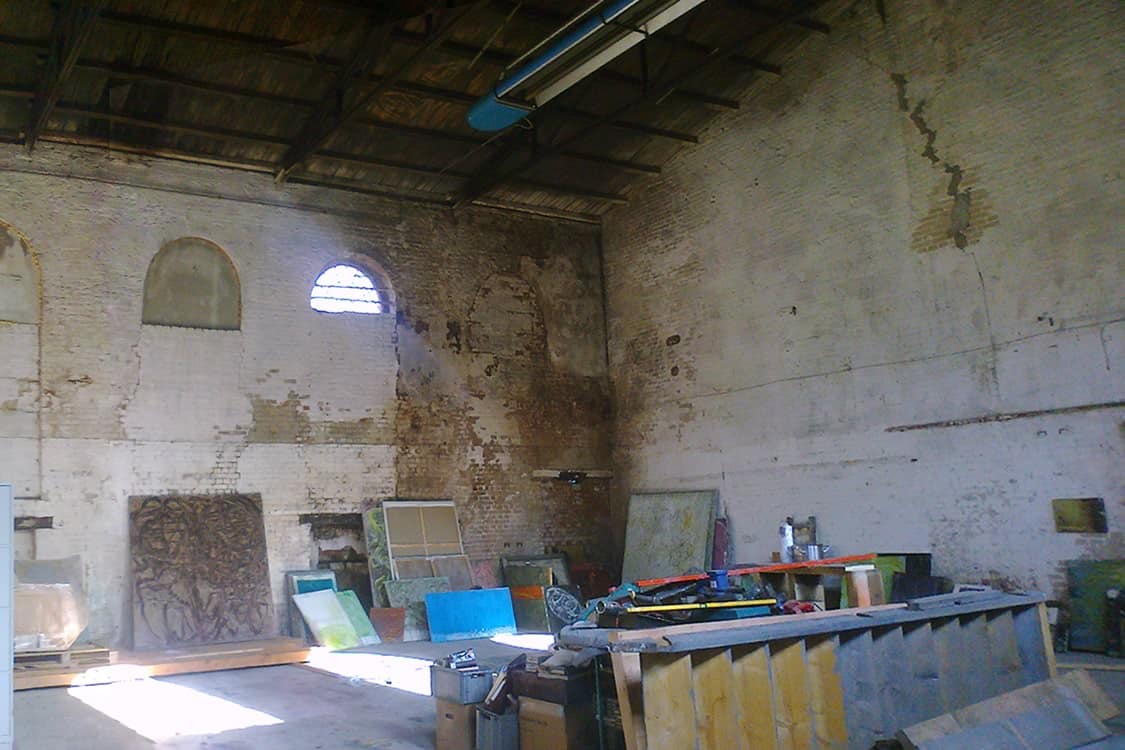The Werkhalle Wiesenburg Berlin is a room for the arts in Berlin-Wedding. From April to November, we will be offering a series of art exhibitions and interdisciplinary events.
In between, there will be one or two spontaneous surprises…
April 2019 sees the start of the third summer programme of exhibitions and events taking place in this wonderful space – we hope you enjoy them!

The Werkhalle Wiesenburg Team…
Thomas Henriksson
Thomas is artistic director and curator for the exhibitions and events in the Werkhalle.
Heidrun Zebdji
Heidrun makes sure the Werkhalle runs smoothly on a day-to-day basis.
Shasta Ellenbogen
Shasta curates the Classical Sundays series and is the founder of The Irresistible Wiesenburg Quartet, playing the viola in every concert.
.
Heather Allen successfully established our website and social media presence in 2018.
And a big thank you to the many people who have helped us with our exhibitions and events!
The Werkhalle
The Werkhalle Wiesenburg Berlin is in the women’s section (opened 1907) of ‘Die Wiesenburg’, the former homeless shelter that opened in Wiesenstraße, Wedding in 1896.
This room was the shelter’s laundry for the daily washing of bedding and linen. After WWII, a Chinese food import company used it for storage purposes. Following this, woodworker, Peter Rintsch, used it as a workshop for several years. In 2004, Thomas Bo Henriksson took it over as his studio, and Heather Allen joined him there from 2013 to 2016. Since 2017, Thomas’s studio has been known as the Werkhalle Wiesenburg.


The Wiesenburg
The Wiesenburg was the third sheltered funded by the ‘Berliner Asyl-Verein für Obdachlose’ (Berlin Homeless Shelter Association) to help the enormous numbers of homeless in the city at the end of the 19th century. At its height, the Wiesenburg gave shelter to 880 men and 400 women every night. Its modern standards and humane treatment of society’s poorest members gained it 1st prize at the 1897 Brussels World Fair.
Men’s shelter, opened 1896
Hall in women’s shelter, opened 1907
World War I left many of its founders in financial difficulties. Consequently, the shelter was closed until 1926. With financial aid from the Berlin state, the Jewish community leased a part of the shelter for Jews returning from Eastern Europe. Local firms moved into other rooms.
In 1931, the Nazis took over the shelter and proceeded to make weapons on the premises. At the very end of the World War 2, fire bombs destroyed most of the men’s dormitories.

1922

1945
Where they once stood, the current owner, degewo (a municipal housing association), has built flats to house people on the site of the ‘garden’ that had established itself in the meantime.
For more information about the Wiesenburg, please see the wiki article or go to Die Wiesenburg Verein e.V.’s website.



